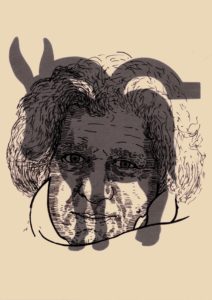Ammiel Alcalay – After Jews And Arabs. Remaking Levantine Culture
Abstract
By exposing the rich and diverse textual and cultural legacy of this time and space, Alcalay reassesses the exclusion of Semitic culture in Europe from the perspective of contemporary Arabic culture and opposing images of the Israeli-Palestinian conflict. This book will compel a revision of Jewish studies by placing contemporary Israeli culture within its Middle Eastern context and the terms of colonial, postcolonial, and multicultural discourse.
Introduction
The modern myth of the Jew as pariah, outsider and wanderer has, iron- ically enough, been translated into the postmodern myth of the Jew as “other,” an other that collapses into the equation: writing = Jew = Book. By what sleight of hand? Metaphor? Metaphysics? Such an exclusive ad- dress (whether it is an open or a closed book) ultimately obscures the necessity of mapping out a space in which the Jew was native, not a stranger but an absolute inhabitant of time and place. The urgency of reiterating not only the memory but the possibility of such a world can be felt most acutely now, upon the present scene, where the political context of “the people of the Book” has undergone a radical transformation while the terms used to record and interpret their history and culture have not only remained static but even regressed into a kind of fixed, iconic solidity.
Writing and reading—interpretation—no matter where, have a lot to do with the unearthing, the grasp, the mastery of and giving over to both presences and absences: reading as recovery and relapse; the ink of writing as lifeblood, animator, nourishment—the book as fertile ground nurtured by ink. But the “furrow,” the “fold” that may be both “history” and the “Jew,” runs the risk of diffusion, dispersion, and, finally, inertia. Like anything that looms large in a people’s memory, this field can become muddy, and these furrows turn to drainage ditches that empty out into a stillborn swamp, final resting place for what is allowed to go un- questioned, uninterpreted, and unrelated to social fact or present circum- stance. Paradoxically, the movement of memory too often reappears in the form of inert, unyielding images: resilient and indelible, their clarity is blinding. In his Commentary on the Mishnah, also known as The Eight Chapters, Maimonides wrote:
One action may resemble another action, so that the two actions are thought to be identical even though they are not. For example, consider three dark places: the sun shines upon one of them, and it is illumined; the moon rises over the second place, and it is illumined; a lamp is lit in the third place, and it is illumined. Light is found in each one of them, but the reason for the first light and its cause is the sun, the cause of the second is the moon, and the cause of the third is fire. . . . There is no notion common to all of them except through equivocation. Grasp this notion, for it is extraordinarily marvelous.
History, with its rigid paradigms of order, comes to shore up the insecure ramparts of a failing memory. Untangling the strands of the past—or submitting to their confusing but exhilarating intricacy— cannot simply be an act of recognition, of fitting events into fixed patterns, ofjust seeing the light. It must begin, rather, by apprehending the sources of light and the present objects they shade or illuminate, and follow with an active, incessant engagement in the process of naming and renaming, covering and uncovering, consuming and producing new relations, investigating hierarchies of power and effect: distilling light into sun, moon, and fire. Just as maps interpret and redefine terrain in the im- age of their makers, readings can yield both past and prospective orders: in the Crimean port of Theodosia, not far (in mind) “from Smyrna and Baghdad,” Osip Mandelstam wrote of a “bookish earth” and dreamt of a place that, within the inherited wisdom of its people, embodied an allegiance to words. Sentenced to internal exile, Mandelstam placed the form of his vision and the memory of his biblical ancestry in a Mediterranean world in which Spain and, even more specifically, Andalusia was central: sowing dormant seeds, he unearthed his own genealogy.
[…]
Published by the University of Minnesota Press, 1992. ISBN 978-0-8166-2155-2
The complete book (PDF): https://muse.jhu.edu/book/31473
